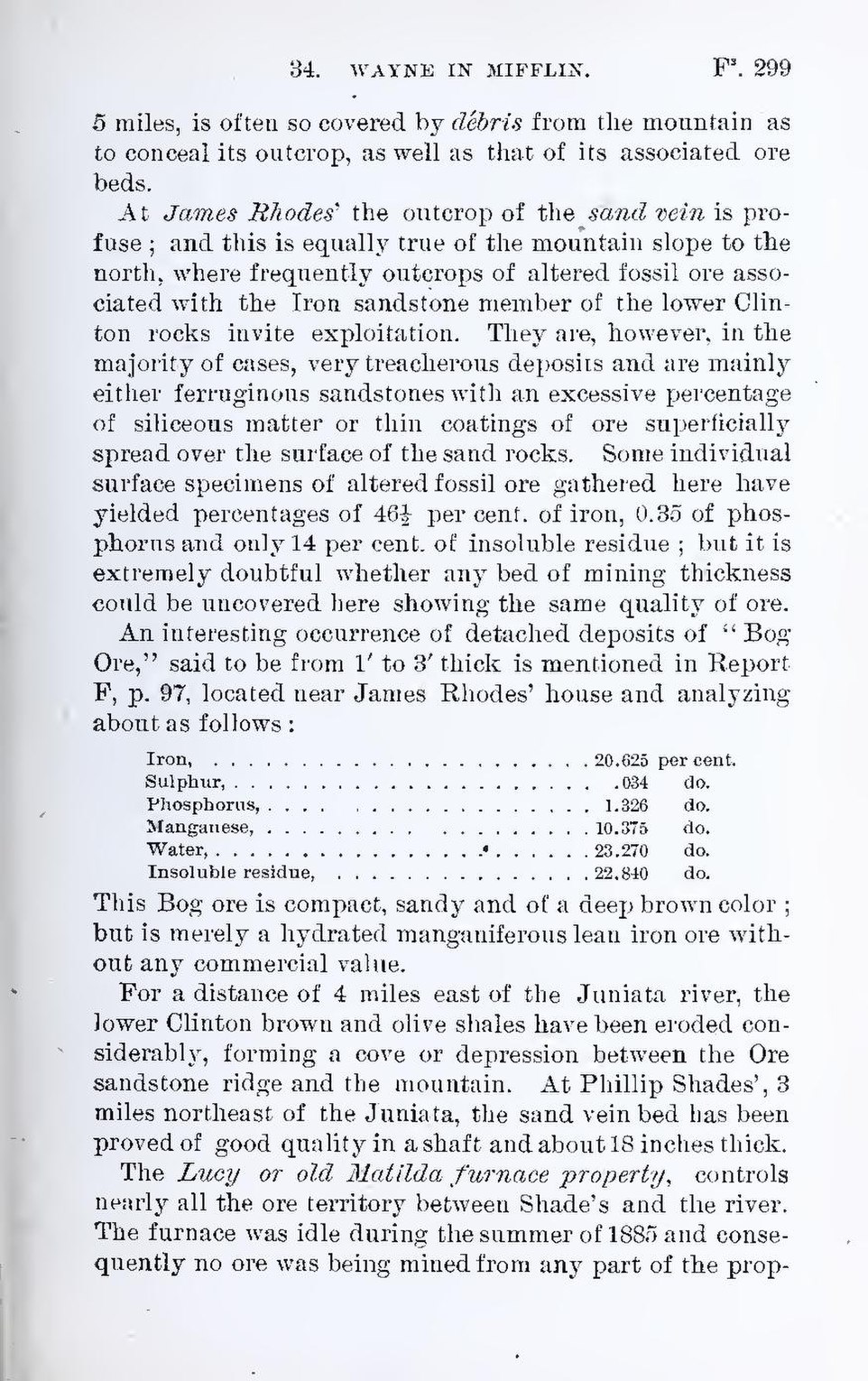5 miles, is often so covered by débris from the mountain as to conceal its outcrop, as well as that of its associated ore beds.
At James Rhodes’ the outcrop of the sand vein is profuse; and this is equally true of the mountain slope to the north, where frequently outcrops of altered fossil ore associated with the Iron sandstone member of the lower Clinton rocks invite exploitation. They are, however, in the majority of cases, very treacherous deposits and are mainly either ferruginous sandstones with an excessive percentage of siliceous matter or thin coatings of ore superficially spread over the surface of the sand rocks. Some individual surface specimens of altered fossil ore gathered here have yielded percentages of 46½ per cent. of iron, 0.35 of phosphorus and only 14 per cent. of insoluble residue; but it is extremely doubtful whether any bed of mining thickness could be uncovered here showing the same quality of ore.
An interesting occurrence of detached deposits of “Bog Ore,” said to be from 1′ to 3′ thick is mentioned in Report F, p. 97, located near James Rhodes’ house and analyzing about as follows:
| Iron, | 20.625 | per cent. |
| Sulphur, | .034 | do. |
| Phosphorus, | 1.326 | do. |
| Manganese, | 10.375 | do. |
| Water, | 23.270 | do. |
| Insoluble residue, | 22.840 | do. |
This Bog ore is compact, sandy and of a deep brown color; but is merely a hydrated manganiferous lean iron ore without any commercial value.
For a distance of 4 miles east of the Juniata river, the Jower Clinton brown and olive shales have been eroded considerably, forming a cove or depression between the Ore sandstone ridge and the mountain. At Phillip Shades’, 3 miles northeast of the Juniata, the sand vein bed has been proved of good quality in a shaft and about 18 inches thick.
The Lucy or old Matilda furnace property, controls nearly all the ore territory between Shade’s and the river. The furnace was idle during the summer of 1885 and consequently no ore was being mined from any part of the prop-
